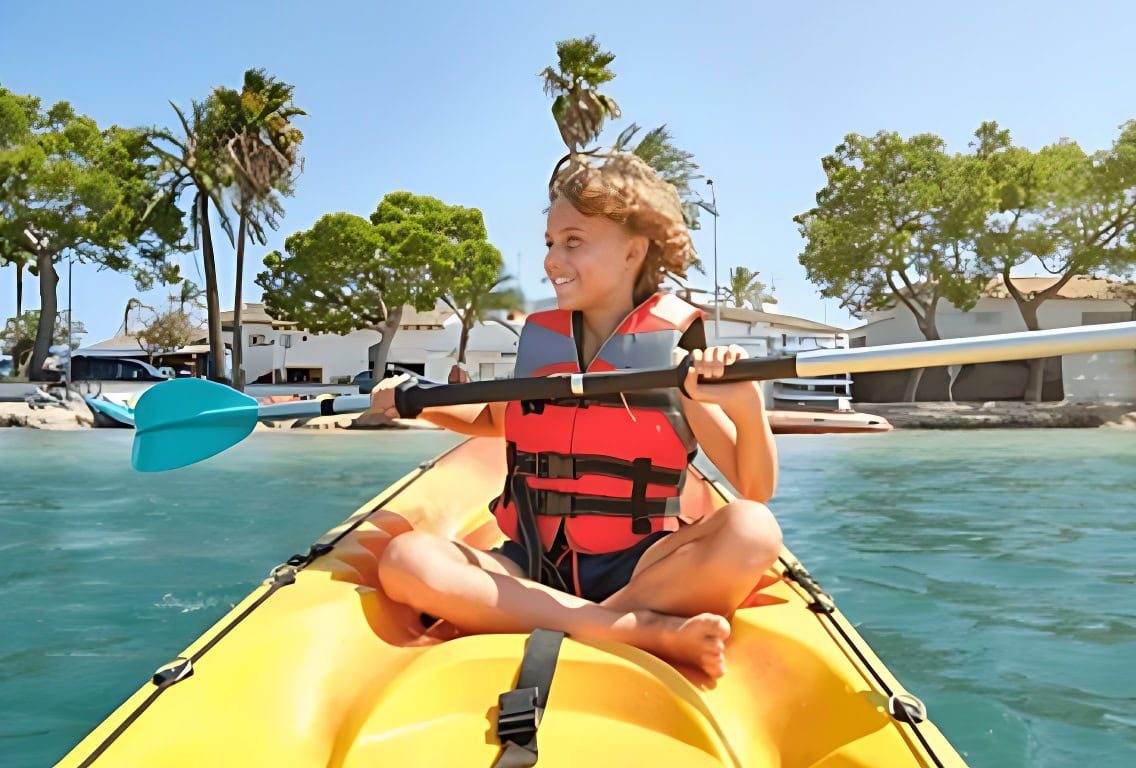Choosing the right life jacket is crucial for water safety. In this guide, we’ll walk you through how to choose a life jacket by understanding different types, ensuring proper fit, verifying certifications, and considering your specific activities. Follow these steps to make an informed decision and stay safe on the water.
Key Takeaways
- Understand the different types of life jackets (Type I, II, and III) to select the right one for your water activity.
- Ensure proper fit and sizing by measuring chest size and weight, and confirming that the life jacket fits snugly without sliding.
- Always choose U.S. Coast Guard approved life jackets to ensure safety and compliance, and regularly inspect them for serviceable conditions.
Understand Different Types of Life Jackets
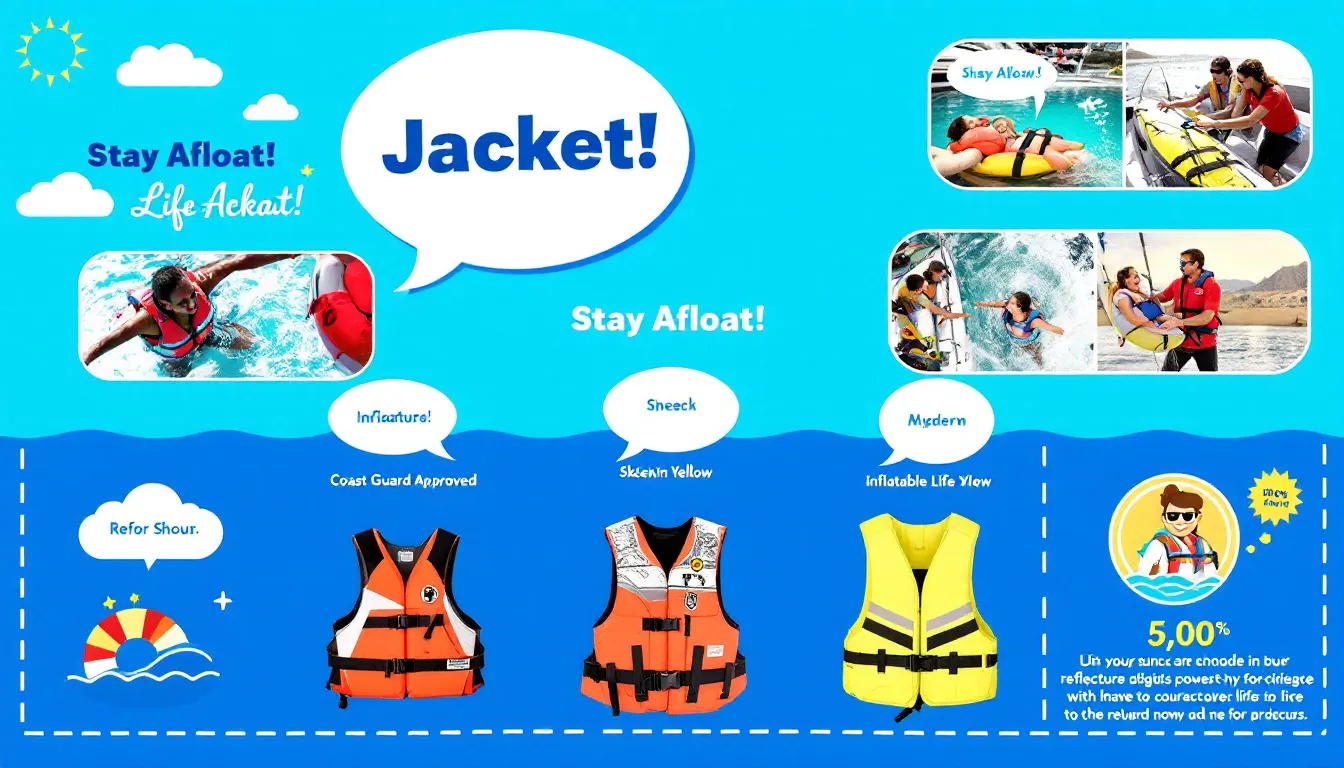
Life jackets come in a variety of shapes, colors, and sizes, each designed to meet the specific needs of different water activities. From traditional foam flotation devices to modern inflatable life jackets, understanding the various types available is the first step in choosing the right one for you. The four basic design types are Inherent, Inflatable, Hybrid, and Special Purpose, each offering different buoyancy levels and features.
Each type has its unique characteristics and benefits, making them suitable for different scenarios. Understanding these differences will help you make an informed decision and ensure maximum safety on the water.
Type I PFDs
Type I PFDs are designed for offshore use and provide the highest level of buoyancy among all types of life jackets. These life jackets are specifically engineered to turn an unconscious person face-up in the water, making them ideal for open waters where rescue may be delayed.
Their robust design ensures maximum safety in rough and remote conditions, making them a top choice for those venturing far from shore.
Type II PFDs
Type II PFDs are designed for near-shore activities and offer a good balance between buoyancy and comfort. While they provide sufficient buoyancy to assist some unconscious wearers in turning to a face-up position, they are less bulky than Type I devices. This makes them suitable for calmer, inland waters where rescue is expected to be prompt.
Their less cumbersome design allows for greater mobility and is ideal for those engaging in near-shore boating and casual water activities with a recreational vessel.
Type III PFDs
Type III PFDs are tailored for recreational users and water sports enthusiasts, focusing on comfort and performance. Unlike Type I and Type II PFDs, Type III life jackets are designed to be worn continuously while engaging in various water activities. They promote easy movement and are generally more comfortable, making them a popular choice for boating, kayaking, and other water sports.
Ensure Proper Fit and Sizing
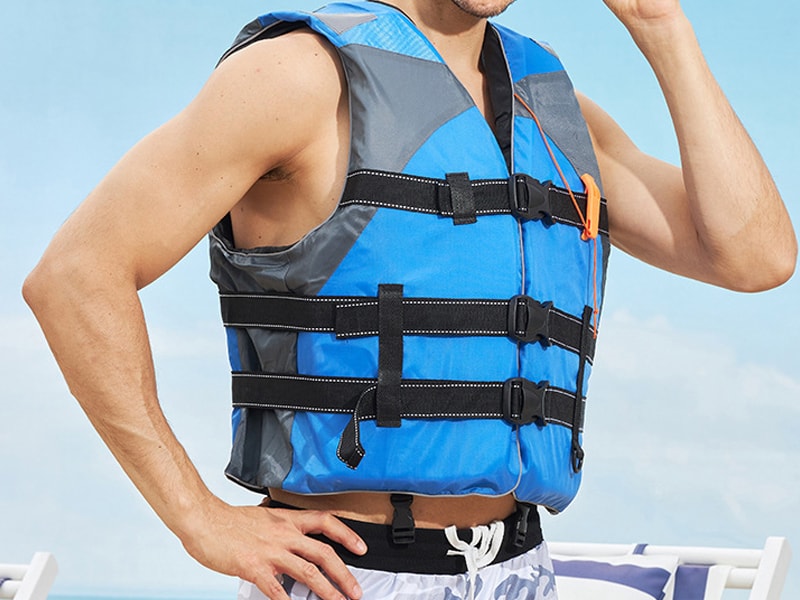
A life jacket is only effective if it fits properly. Ensuring the proper fit and sizing of your life jacket is crucial for safety and comfort. A well-fitting life jacket will not ride up or slip off in the water, providing the necessary buoyancy to keep you afloat during an emergency. Selecting the right life jacket involves understanding the specific demands of each water activity and the individual’s body measurements.
To achieve the perfect fit, you need to measure the chest size and weight, check the fit by lifting the shoulders, and consider the adjustability features of the life jacket. Each of these steps is essential to ensure that the life jacket fits snugly and provides the intended protection.
We will explore these steps in more detail.For more details, please contact https://jiekangrescue.com/.
Measure Chest Size and Weight
The first step in selecting the right life jacket size is to measure the chest circumference. This measurement should be taken under the arms and across the chest to ensure accuracy. In addition to chest size, it’s important to consider the individual’s weight when selecting a life jacket, as weight affects buoyancy requirements.
Considering both measurements ensures a proper fit that maximizes safety and comfort.
Check Fit by Lifting Shoulders
Test the fit by lifting your arms and shoulders. The jacket should remain snug against your torso and not slide excessively or rise up. This simple test is crucial for ensuring that the life jacket will stay in place during water activities, providing the necessary buoyancy and support.
A properly fitted life jacket enhances both safety and comfort, allowing you to focus on enjoying your time on the water.
Adjustability Features
Seek out life jackets with adjustable straps and buckles. These features enable customization for various body shapes, ensuring a secure fit. Adjustable straps are essential for achieving a snug fit, which is crucial for safety and effectiveness.
By adjusting the straps to fit your body, you can enhance both comfort and security while wearing the life jacket.
Look for U.S. Coast Guard Approval
When choosing a life jacket, it’s essential to look for U.S. Coast Guard approval. This certification confirms the life jacket meets strict safety standards and boating laws. All life jackets must display a U.S. Coast Guard approval number to verify their compliance with these standards. Selecting Coast Guard-approved life jackets ensures confidence in their performance and reliability.
Carefully read labels and verify certification. Labels offer crucial information about approval status and performance level. Understanding label reading and certification verification ensures you choose a life jacket that meets safety requirements.
Read Labels Carefully
Labels on life jackets indicate whether they meet U.S. Coast Guard standards, providing important safety information. To confirm a life jacket’s certification, check if it has the official U.S. Coast Guard approval mark. It’s important to check the certification status of a life jacket to ensure it meets safety standards.
Labels should also indicate the specific type of approval and performance level of the life jacket, confirming its suitability for safe use.
Verify Certification
Choosing life jackets that feature U.S. Coast Guard approval ensures safety and compliance with boating laws. To verify certification, look for visible labels that indicate the life jacket meets U.S. Coast Guard standards. Reading the labels carefully helps confirm that the life jacket is approved for specific users and intended activities.
By ensuring your life jacket is certified, you can trust its performance in emergency situations.
Consider the Intended Activity
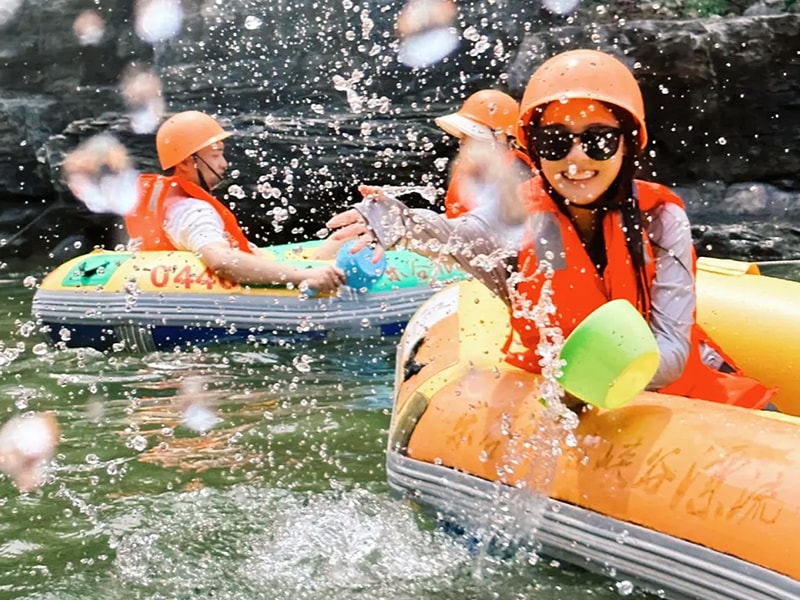
Various water activities demand specific types of life jackets. They are categorized by intended use: offshore, near-shore, and personal watercraft activities. Matching the type of life jacket to the specific activity is crucial for optimal performance and safety. Consider the design and features of the life jacket to ensure it meets the demands of your intended activity.
The following subsections explore life jackets suited for boating and sailing, water skiing and wakeboarding, and white water rafting. Each activity has unique requirements, and the right life jacket enhances both safety and enjoyment.
Boating and Sailing
Life jackets recommended for boating and sailing prioritize comfort and mobility, allowing users to perform tasks while wearing them. Type III PFDs are designed for comfort, allowing for easy movement, making them ideal for recreational users and water sports. These life jackets provide ample foam buoyancy and are highly recommended for sailors due to their ability to keep a person face-up in water, even if unconscious.
For general boating and sailing, life jackets should provide good buoyancy without being overly bulky, allowing for ease of movement.
Water Skiing and Wakeboarding
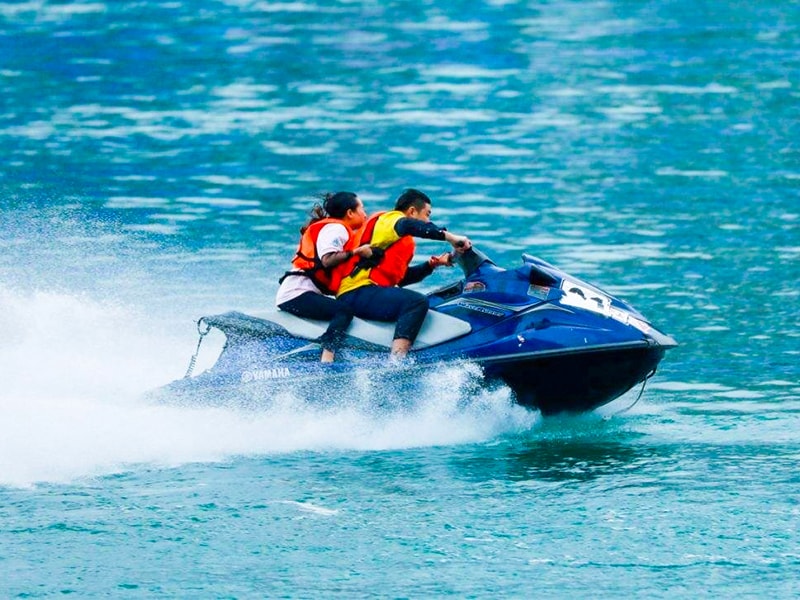
Choosing a life jacket that is designed for water sports is critical, as these jackets often feature additional buoyancy and protection for high-speed activities. For skiing and wakeboarding, high-impact life jackets offer a snug fit and flexibility, allowing for a full range of motion during active sports.
These fit life jackets typically feature a shorter cut for better mobility and are reinforced to handle high-impact activities.
White Water Rafting
In white water conditions, life jackets that provide extra protection and buoyancy are crucial for safety against swift currents. Life jackets for white water rafting are typically designed with a rescue harness and extra padding to enhance safety and support during turbulent waters. Higher flotation levels are essential to keep the head above water during turbulent rapids.
Type I personal flotation devices are designed for use in rough waters and provide the highest level of buoyancy, making them ideal for open water where rescue might be delayed.
Inspect for Serviceable Condition
Regularly inspecting your life jacket for serviceable condition is vital for ensuring its effectiveness. Before each use, visually inspect your life jacket for any signs of damage, such as excessive wear or contamination. Checking for wear and tear, testing buoyancy regularly, and proper storage are key practices to maintain the life jacket’s condition.
In the following subsections, we’ll detail the steps to check for wear and tear, test buoyancy, and store life jackets properly. These practices will help ensure your life jacket is always ready to perform when needed.
Check for Wear and Tear
Regularly checking for wear and tear on life jackets is essential for ensuring safety while boating. Look for frayed straps, which can compromise the integrity of the life jacket. Inspect the foam for punctures or damage, as this may affect buoyancy. Signs of wear can significantly reduce the effectiveness of a life jacket in keeping you safe in the water.
If any signs of damage are found, replace the life jacket to ensure continued safety during use.
Test Buoyancy Regularly
Conducting buoyancy tests is essential to ensure your life jacket will perform appropriately in case of an emergency. Place the life jacket in water to see if it floats properly; it should support its weight without sinking. Inflate the life jacket and let it sit for several hours; a loss of firmness indicates a leak.
Squeeze the kapok bags used in some life jackets to detect any air leaks. Regular buoyancy tests ensure that your life jacket remains effective over time.
Store Properly
Proper storage of life jackets is essential to maintain their condition and effectiveness. Store life jackets in a dry, well-ventilated area away from direct sunlight to prevent damage. Keeping life jackets in a cool, dry place prevents material degradation and mold growth.
Proper storage practices will prolong the lifespan of your life jackets, ensuring they remain serviceable when needed.
Make Sure Life Jackets Are Readily Accessible
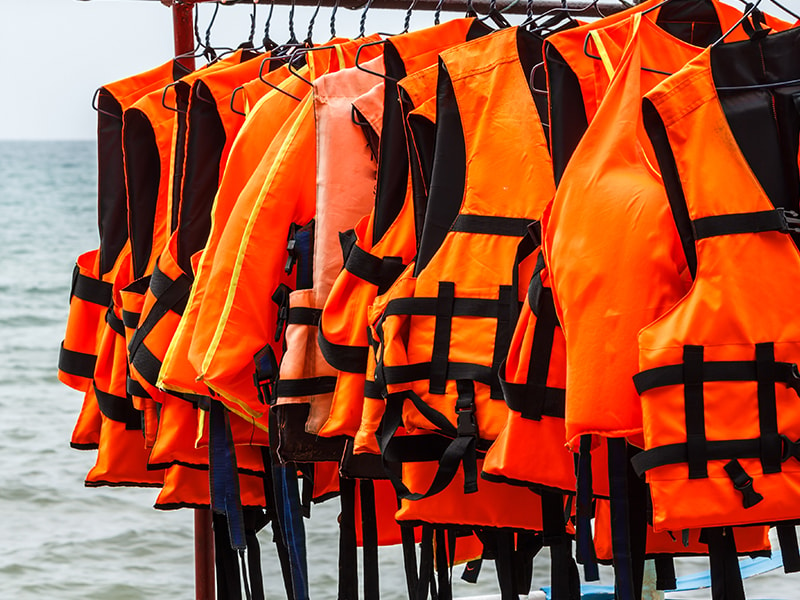
Having personal flotation devices readily accessible on a boat is vital for safety and compliance with regulations. Immediate access to life jackets can significantly reduce response time in emergencies, potentially saving lives. Ensuring that life jackets are stored in easily reachable locations and not hidden away or locked up is critical.
The following subsections discuss proper storage locations on the boat and the importance of assigning life jackets to passengers. These practices ensure everyone on board knows where their life jacket is and how to use it in emergencies.
Proper Storage Locations
Storing life jackets in dedicated lockers or open areas on the boat ensures they can be accessed quickly in emergencies. Life jackets should be stored in a dry, easily accessible location on the boat, such as under seats or in dedicated storage compartments. Storing life jackets in dry, visible, and easily reachable locations enhances safety on board.
Avoid keeping life jackets in locked compartments or stacked under other gear, as this can delay access when needed.
Assign Life Jackets to Passengers
Assigning life jackets to passengers before setting out is crucial for safety. Ensure that life jackets are stored in easily reachable locations on the boat to ensure quick access during emergencies. Educate passengers on how to properly put on life jackets, ensuring they are familiar with the process before going on the water.
Constant supervision is necessary for children when near water, even when they are wearing life jackets.
Educate Children About Wearing Life Jackets
Teaching children about the importance of life jackets can significantly reduce the risk of drowning. Children must understand the vital role life jackets play in water safety and be encouraged to wear them consistently. Educating passengers about life jacket locations and proper usage is crucial for effective emergency response. All passengers should be briefed on life jacket locations and practice donning them quickly before setting out.
The following subsections explore child-specific designs, teaching kids safety, and the importance of supervision near water. These practices will help ensure that children are safe and informed when participating in boating activities.
Child-Specific Designs
Infant life jackets must comply with Type II standards set by the U.S. This requirement ensures proper safety measures for young children. Coast Guard approval, ensuring safety and proper performance. These life jackets are typically made of neoprene and nylon, which are durable and provide comfort in the water. The weight range suitable for infant life jackets is from 0-30 lbs, ensuring a proper fit for young children.
Selecting a life jacket designed specifically for children ensures they have the right protection and comfort.
Teaching Kids Safety
Teaching children the importance of wearing life jackets instills good safety habits and provides reassurance in water settings. Child-specific life jackets are designed with features such as a snug fit, bright colors, and safety straps for comfort and visibility.
Constant supervision is essential when children are near water, even when they are wearing life jackets, to ensure their safety.
Supervision Near Water
Constant adult supervision of children near water is essential, even if they are wearing life jackets. This supervision ensures that children are safe and can respond quickly in case of an emergency. The presence of an adult provides an additional layer of safety, complementing the protection offered by the life jacket.
Ensuring children are never left unsupervised near water is a critical safety measure.
Summary
Choosing the right life jacket is a vital step in ensuring safety on the water. Understanding the different types of life jackets, ensuring proper fit and sizing, looking for U.S. Coast Guard approval, considering the intended activity, and regularly inspecting for serviceable condition are all essential practices. By following these guidelines, you can select a life jacket that provides optimal safety and comfort for any water activity.
Remember, life jackets save lives. Prioritize safety by choosing the right life jacket for you and your loved ones. Educate yourself and others about the importance of wearing life jackets and ensure they are readily accessible. With the right knowledge and preparation, you can enjoy your time on the water with peace of mind.
Frequently Asked Questions
Why is proper fit important for a life jacket?
**A proper fit is crucial for a life jacket because it guarantees that it stays securely in place, providing the buoyancy needed to keep you safe in an emergency. Without a good fit, the jacket could ride up or slip off, putting your life at risk.
What type of life jacket is best for water skiing?
**The best life jacket for water skiing is one designed specifically for the sport, featuring a snug fit, extra buoyancy, and minimal bulk to ensure maximum movement and flexibility.
How often should I test the buoyancy of my life jacket?
**You should test the buoyancy of your life jacket regularly to ensure its effectiveness; try placing it in water and confirming it floats properly.
What should I do if I find signs of wear and tear on my life jacket?
**Replace the life jacket immediately if you notice any signs of wear and tear, like frayed straps or damaged foam, to ensure your safety on the water.
In conclusion, when it comes to water rescue and safety, we at Jiekang are a brand you can trust. With our strong commitment to quality and innovation, we have been providing reliable water rescue products, including life jackets, to ensure safety in critical situations. Whether you’re looking for personal safety gear or professional rescue equipment, our extensive range of products is designed to meet the highest standards. For more information or to explore our offerings, feel free to reach out to us at jkyl@jkyl.net or call +86 19941913491. Stay safe and prepared with our trusted solutions.

